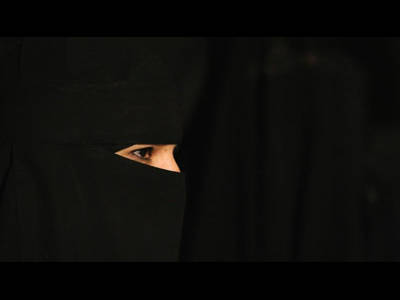What is the 'Stork Derby' that competed for 'the number of children born in 10 years' to receive the heritage of a millionaire?

The battle for inheritance is generally fought among bereaved families, but in Canada in the first half of the 20th century, millionaires gave some of their property to 'the woman who gave birth to the most children in the first decade of her death.' Since he left a will to share, the ' Stork Derby ' was held to give birth to as many children as possible in order to receive an amount of nearly 800 million yen in terms of modern value.
How A Dead Millionaire Convinced Dozens Of Women To Have As Many Babies As Possible | FiveThirtyEight
https://fivethirtyeight.com/features/how-a-dead-millionaire-convinced-dozens-of-women-to-have-as-many-babies-as-possible/
On October 31, 1926, Canadian attorney and wealthy Charles Vance Miller died at the age of 73. Miller, who had no dependents or relatives, said in his will, 'The legacy I left behind is evidence of the stupidity that I had accumulated more assets than I needed in my life,' a deliberately pointless mischief. He said that he would donate heritage in a way like this.
For example, in the will written by Miller, 'We will give a villa in Jamaica on the condition that'three people who hate each other (TP Galt, JD Montgomery, James Haverson) live together.' There were ridiculous provisions such as 'Giving brewery stock to a Toronto priest who advocates a ban on drinking' and 'Giving horse racing club stock to a person who opposes horse racing.' Among them, the one that attracted the most attention was 'Giving the remaining property to a mother living in Toronto who gave birth to the most children in 10 years after her death and registered under the law. It was a clause.
The value of the assets donated under this clause increased further 10 years after Miller's death, and at the time of the final donation, the amount was close to 800 million yen in terms of modern value. Miller stipulated that if there were multiple mothers who gave birth to the same number of children, the amount would be evenly distributed among the winners.

Since Miller had the idea that contraception should not be taboo, he paradoxically emphasized the importance of contraception by holding a race to give heritage to mothers who gave birth to many children. He said he might have wanted it. However, when the conditions for receiving Miller's heritage became widely known, local newspapers and others competed under the name of 'Stork Derby', and the number of participating families increased.
The big question for families participating in the stork derby was, 'How do you maximize the number of children you have in 10 years?' In developed countries, the fertility rate has dropped significantly since the 19th century, and Canada's
In 1926, the average fertility rate in Canada was '3.36', but due to the effects of the Great Depression , the fertility rate dropped to '2.8' in 1934. The rate of decline was far greater than expected from past fertility rates, but stork derby participants continued to give birth against this trend.

Since it generally takes at least 9 months from fertilization to delivery, a mother who gave birth on the day Miller died can give birth up to 14 times. However, of course, the human body cannot repeat the cycle of fertilization and childbirth so easily, and the possibility of becoming pregnant again after childbirth depends on 'whether the mother breastfeeds' and 'the recovery rate of the uterus'. That thing.
Breastfeeding often interferes with mothers' ovulation, and
It is also speculated that many mothers were more likely to have a miscarriage because they did not rest their uterus for several months after giving birth. It is said that about 15% of known pregnancies will have a miscarriage even if the uterus is in perfect condition, and the proportion will be even higher if the case of miscarriage before the woman notices that she is pregnant is included. Because of these factors, California fertility researcher Jane Frederick said that a normal woman can give birth to '4-5 children with breastfeeding and no breastfeeding' in 10 years. Up to 7 people. '
Of course, if you become pregnant with twins or triplets, you can have many children in one birth, but as far as the records and newspaper articles at that time are concerned, there are cases where the leading candidates for the stork derby gave birth to twins. It wasn't that many. Therefore, stork derby participants tried to give birth to as many children as possible with strategies such as 'avoid breastfeeding' and 'men refrain from masturbating for 5 days before sexual intercourse'.

It's unclear how many families actually tried to give birth to Miller's fortune, but by the 1936 deadline, ten years after Miller's death, there were at least eight more than 20 families in Toronto. I was giving birth to an amazing number of children. In the dark news of the Great Depression, people pay attention to the strange topic of 'a birth race over the heritage of a millionaire,' and newspapers report on potential candidates for childbirth and mirrors aiming for heritage by invalidating wills. He reported about the distant relationship of.
Ten years after Miller's death, the stork derby was closed, and 32 lawyers representing each family attended hearings to claim heritage rights. First, the presiding judge, William Middleton, eliminated all families with children under the age of 10 under eight, and six families with nine or more children were contested for heritage.
Of these, a woman named Pauline Clark gave birth to 10 children within the period, 5 of whom were born to her ex-husband and 5 to another man who was not her husband. Middleton dismissed Clark's claim, saying, '
Ultimately, Miller's legacy was distributed to four families, the Timlek, Nagle, Smith, and McLeans, who gave birth to nine children, each receiving nearly 200 million yen in modern value. I did. In addition, Clark and Kenny continued to make trials over heritage, and finally received a settlement of nearly 20 million yen in terms of modern value.

Lucy Timlek, who won the prize money after winning the stork derby, said in an interview at the time that raising a large family was not easy, 'I think contraception is great.' It's a shame it wasn't available. I know a family who would have welcomed the knowledge of contraception. ' Kevin Timlek, the son of Lucy's youngest child, Edward Timlek, is still home to the Stork Derby-born Timlek family throughout Canada, and has more than 100 cousins nationwide. Said to FiveThirtyEight.
Related Posts:
in Note, Posted by log1h_ik







